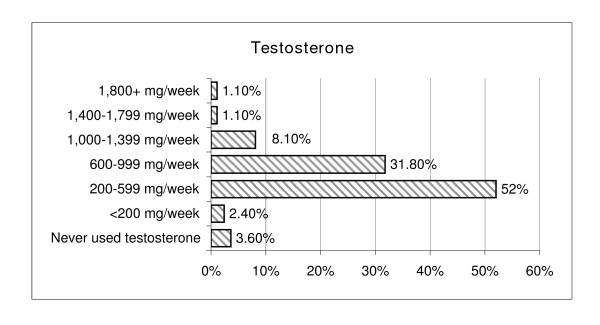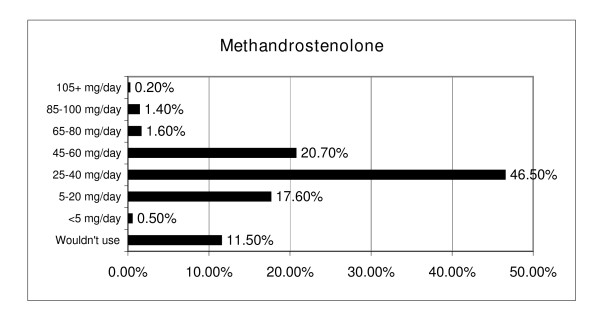
Defense attorney Thomas Lesser of Lesser, Newman & Nasser proved that federal prosecutors do not have a monopoly on anabolic steroid misinformation and falsehoods. Lesser filed a sentencing memorandum in Massachusetts federal court requesting one year probation for his client who had previously pleaded guilty to steroid distribution charges. Lesser falsely characterized the typical steroid user as a massive consumer of ridiculous amounts of anabolic steroids (“Sentencing Memorandum USA v. Shooltz,” March 19, 2009).
A typical steroid user would use one gram of testosterone per day, which he would combine with other steroids, as well as human growth hormone. Over a ten-week period, 140 grams of steroids would be used, 70 grams of testosterone and a similar quantity of other steroids. Body builders would use more.
In other words, Lesser expected the court to believe that the typical steroid cycle involved the equivalent of (1) 7,000mg testosterone esters per week; (2) 3,500mg Deca Durabolin per week; (3) 500mg Dianabol per day; and (4) human growth hormone (HGH). Lesser claimed that bodybuilders used even greater quantities of steroids.
It is unclear whether Lesser’s false assertions were out of ignorance or an intentional attempt to minimize the amount of steroids involved.
Steroid legal expert Rick Collins, of Collins, McDonald and Gann, explained in an email correspondence how sentencing for steroid-related convictions is calculated and how maximum steroid trafficking sentences have escalated in recent years.
Federal sentencing in steroid or other controlled substance trafficking cases is generally imposed based on the quantity of drug units involved. This was a case from 2004. The United States Sentencing Guidelines that existed during the criminal conduct calculated steroid units much more leniently than today. In fact, the total quantity of steroid units in the case was less than 250 units “ the very lowest amount in the steroid Guidelines (a Level 6). So, the sentence imposed wasn’t a gift of any kind. However, anyone being sentenced under the current Guidelines would face a much tougher sentence.
Rick Collins believes the characterization of the typical steroid user is “absurd”. Collins is an expert on patterns of non-medical steroid use having conducted the most comprehensive survey of steroid users to date. Collins was the co-author of “A league of their own: demographics, motivations and patterns of use of 1,955 male adult non-medical anabolic steroid users in the United States” published in the Journal of International Sports Nutrition.
“As for the use patterns described in the Sentencing Memorandum, the claim that one gram of testosterone per day combined with other steroids is typical is, as you know, absurd.”


Rick Collins corrects the undisputable false allegation of massive steroid distribution by Patrick Arnold and Victor Conte in the BALCO case. Lesser falsely claimed that the BALCO defendants “were responsible for the manufacture and distribution of millions of pill”. Collins represented Patrick Arnold on a pro hac vice basis during Arnold’s BALCO trial.
More troubling, the claim that Victor Conte and Patrick Arnold distributed millions of pills is blatantly false. Patrick didn’t distribute any pills at all, and what substances he did distribute were in very, very modest amounts! Who knows where people get this information? Alas, it’s coming from someone who calls Marion Jones Marion Johnson, so take it from whence it comes.
The steroid misinformation submitted in this case highlights the importance of knowledgeable legal representation specializing in steroid law. Lesser’s client was sentenced to three years probation and community service (“Steroid dealer gets 3 years probation,” March 24).
“You’re going to have to eat some humble pie,” Ponsor told the defendant, adding the sentence could require eight hours of service every Saturday for the next three years. “That might mean mopping the floors in a state psychiatric hospital or updating files in a community clinic,” the judge added.
It is unknown whether Lesser hurt or helped his client with the steroid misinformation filed in court documents.
About the author
Millard writes about anabolic steroids and performance enhancing drugs and their use and impact in sport and society. He discusses the medical and non-medical uses of anabolic-androgenic steroids while advocating a harm reduction approach to steroid education.

Leave a Reply
You must be logged in to post a comment.